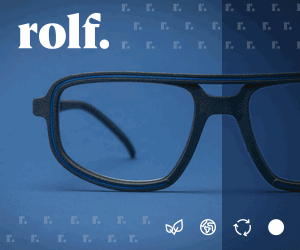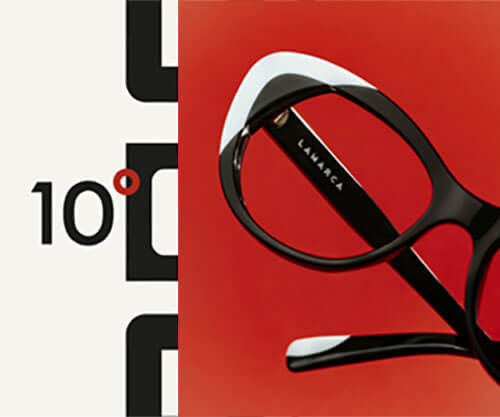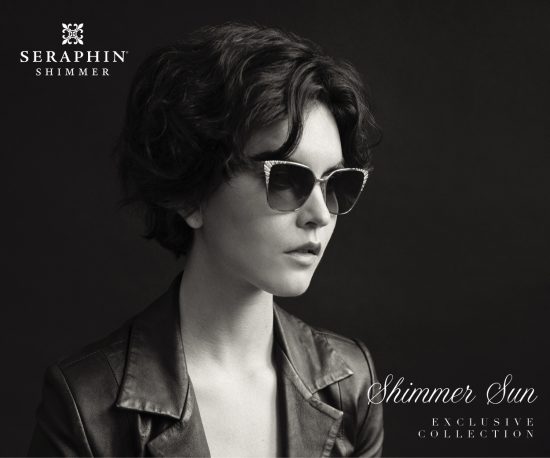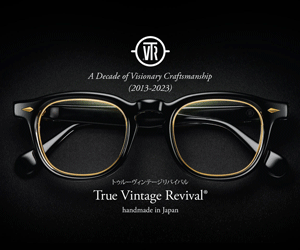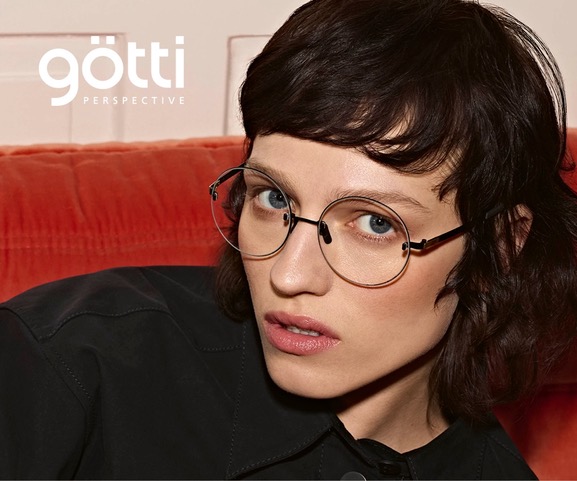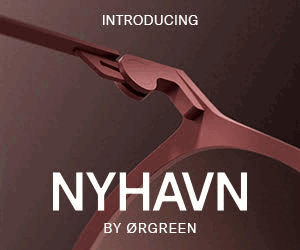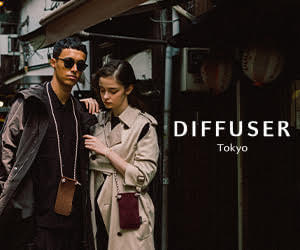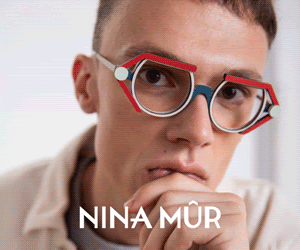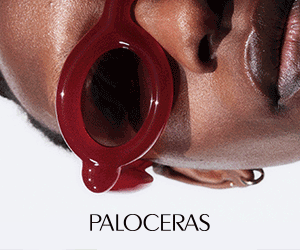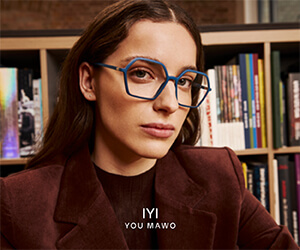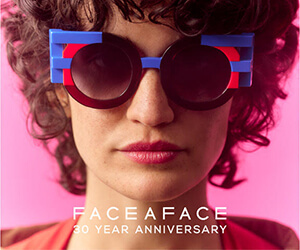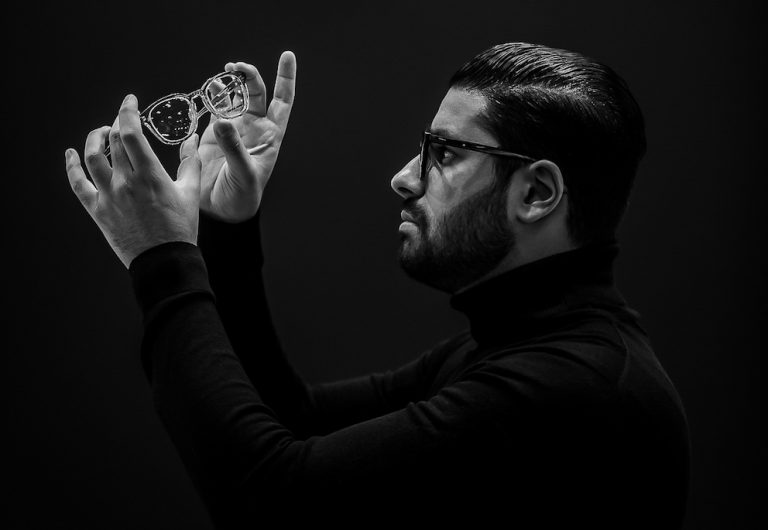Scandinavian eyewear brand Carlotta’s Village offers a fresh aesthetic perspective on eyewear design, placing the wearer at the forefront of the frame concept. It’s no surprise that the brand appeals to those of strong opinions and colourful personalities who do not shy away from making a stand; whether that be in life, in their career, or in their own personal style. Eyestylist spoke to Charlotte Dokkedal Leth, Co-founder, Designer and Managing Director.
We have read that your love of visual expression started out at a young age. When was it that this passion first ignited and how has it continued to develop over time? Well, I think it probably started before I can remember. I say this because I’ve been visually expressing myself for as long as I can remember; whether it be drawing, painting, ceramics – whatever! Nowadays, I believe it is referred to as “a maker”. I’ve always been making things because although I liked the academic world as well, I fell in love with the feeling of actually creating something. It’s the fact that you can see it right in front of you, what has come from your work, from your imagination, you know? You have something you can literally touch, that started out as an image in your head.
Where do you find the inspiration for your work? It’s difficult to answer actually because it comes from a buildup of expressions from various sources. It can be, if I can find a word – it can be something like a type of light, for example; if I go for a stroll in the woods, it can be the way that light hits the trees or, how it falls down through the leaves and makes a pattern on the path that you’re walking on. Or it can be colour; there’s always such a lot of shades of green in nature, it’s in the trees, it’s in the leaves and it grows in mushrooms and fungus – the textures of those natural entities too, are incredibly special and inspiring. If I’m feeling totally lost, I go to an art museum because there’s always something there to spark my imagination – if I go and see what other creative people do, then it inspires me to go home and do something just as amazing. The same thing is true for architecture, I think a city like Paris that has all those beautiful cast iron balconies and details like that, it’s always going to make you feel something. Above: Charlotte Dokkedal Leth, Co-founder

As someone who is passionate about design, was creating a career specifically in the eyewear industry always your dream? No, it wasn’t ever ,actually. I ended up there by accident; if I hadn’t married Bo, I would have never got into the business – I think it would have been something else, something creative of course. When I was very young, being a designer or an artist was not really taken very seriously, it was not considered a “real job”. My parents said you will live a good life if you go to this school and complete this course, and I thought ‘okay, I’ll do this and see what happens’. So, for many years I was in the IT business; my education is in Software Programming and I have worked within that industry for twenty years, in different areas. The fun thing about the IT sector is that one of the reasons there is so much freedom for creativity is that it’s a young business, so there are not many rules. When I started working in it, around twenty five years ago, there were not many options for education, or pathways; you had to build the business for yourself and find out how things worked, and what you can do with them. After doing this I married Bo, and he was in the eyewear industry; we went to all the fairs and shows and started discussing why we couldn’t find any of the frames we were looking for, and that’s how Carlotta’s Village started.
Could you tell us about your current collection of eyewear? Of course! Right now we are focusing on acetate because that is where we started. The colours are translucent – I love the effect translucency has because it can reflect light and other colours; they can reflect what you’re wearing, they let your own skin pigment come through the frame, so they always somehow fit in. I love how our frames allow their wearer to play the main role, they don’t take centre stage. We want our frames to further accentuate and enhance the features and the style of those who wear them.

How would you describe the regular customer, or the client base of Carlotta’s Village? I think it’s hard to say something generally with any client base, but especially for us as our clients range from age fourteen to ninety four. However, I think the one thing our customers have in common is their attitude, they have an opinion, they are not afraid to take a stand. Of course they care about their appearance but they don’t necessarily want it to be what they are wearing – more so a reflection of who they are, a statement, but in a more personal sense. When we hear from some of our dealers they say “We have customers that once they’ve purchased a Carlotta’s Village frame, they’re passionate about it and want another – nothing else will suffice.”
We would love to hear about the founding of Carlotta’s Village; the steps it took to get where you are today… Well, we started off discussing the visible gap in the market for the frames we desired, but also the fact that being a couple was a factor to consider; it’s always risky entering into business with someone you live with and love. Bo had been an independent agent for many years and I did his bookkeeping and stuff like that, so in a sense that actually was a benefit to us because we already knew that we could work together. Then there are other things that are similar to work that also show you are compatible in a working environment like housekeeping, cooking, gardening etc. We started out very small with three frame styles in three colours. So we took our small tray of frames to the clients Bo already had and went from there. We had a bit of an advantage starting out, over other small eyewear brands. I still had my job as a software consultant on the side, but it was hard to do both things to a high standard, so I gave it up – I like to give my entire self to my work. I think it was a controlled kind of risk because we didn’t start out with a huge investment that could have made us bankrupt, or left us with nothing; we started with a small investment that was controllable. We didn’t just do it, I mean, we were talking about it for years.

Would you ever consider branching out with the brand of Carlotta’s Village into another area of design? That’s funny that you should ask that, because that was actually our initial idea! Calling our brand Carlotta’s Village was done so it could be seen as a virtual, global village of products for our customers. We wanted to ensure we would not be limited by our brand in the future. There are some creative people who are only in one line of work; they are painters or clothing designers or whatever else. I’ve always been doing many different things, I’m never only doing one thing – I like to have multiple outlets for my creativity. I crave variety, and I’m not good at having only one focus. I always say I could never have been a ‘tennis pro’ or something like that, because having the restraint and dedication to playing tennis seven or eight hours every day, seven days a week and never doing much else – that would kill me. So yes, I think our original idea of Carlotta’s Village is still something I would like to explore, and something we will likely do in the future – I can’t say when just yet, but it’s definitely on the horizon.
Carlotta’s Village prides itself on being a conscious eyewear brand. What would your thoughts on that be regarding sustainability and how do you implement it within your products / or brand? Well, I think ‘sustainability’ is a word that has been so misinterpreted and taken as a hostage for all kinds of marketing speculations. It’s funny because we attempted to launch sustainable packaging for Carlotta’s Village about five years ago, before it was ‘cool’ – it really wasn’t received well then; while it probably would have been welcome and encouraged today. I’m of the opinion that there isn’t actually a fixed definition of what being sustainable is other than that you shouldn’t leave the planet in a worse condition than it was when you arrived. I’m someone who is allergic to so many things, so in that sense I’ve always been very attentive to what materials are used in whatever products I am purchasing or consuming. So, it was important to me from the beginning that we didn’t use any materials that we couldn’t vouch for – luckily, acetate is biodegradable and today you can create really high quality acetate with no bad chemicals or anything in it so it’s very skin-friendly. In the business of eyewear, there is also the other advantage that it’s a small product, with a long life-cycle that doesn’t weigh much, meaning transport is not as huge ca oncern as it is for many other companies and manufacturers. I also think you get what you pay for; if you want the cheapest product and the fastest delivery you’re not going to get the highest quality, most beautiful and durable frames – it just doesn’t make sense to think otherwise. That’s why we have such a strong, good relationship with our manufacturers, we never doubt their costs or timelines and they never fail to meet our expectations – that respect, that line of chain production, is sustainable in itself. Find out more about the brand at https://carlottasvillage.com
A Zoom interview by Victoria G. L. Brunton exclusively for Eyestylist.com

